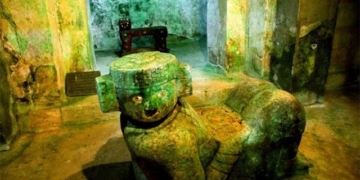 |
|
Hunting scene from the Koguryo Dynasty. (Photo: atarn) |
Chinese archaeologists have recently discovered the remains of an ancient city dating back to the Han Dynasty (202 BC – 220 AD) along with a series of tombs from the ancient Koguryo Dynasty located in the border region between China and North Korea.
The ruins were uncovered during the renovation of the Yunfeng Reservoir in a remote mountainous area in the northeastern part of the country.
The ancient city, now covered in mud, has a square layout and is surrounded by a city wall that stands 1.5 meters high and 4 meters wide. There are also traces of a moat that encircles the city.
The western wall of the city is 180 meters long, and the entrance, which is 6 meters wide, remains intact, along with a northern wall that stretches 220 meters. The eastern side is obscured by the foundations of houses built in recent years, while the southern side has been eroded by water from a nearby river. More than a dozen tombs have also been found within the city.
Based on the architecture and building style, researchers believe that the ancient city may have been established during the Han Dynasty. The team also discovered a cemetery consisting of 2,360 individual graves, located 20 kilometers away from the ancient city, still within the reservoir area. This extensive number of graves is thought to belong to the Koguryo Kingdom, which existed from the 1st to the 5th centuries AD.
Researchers assert that this discovery holds significant importance for understanding the history of ethnic minorities in northern China.


















































